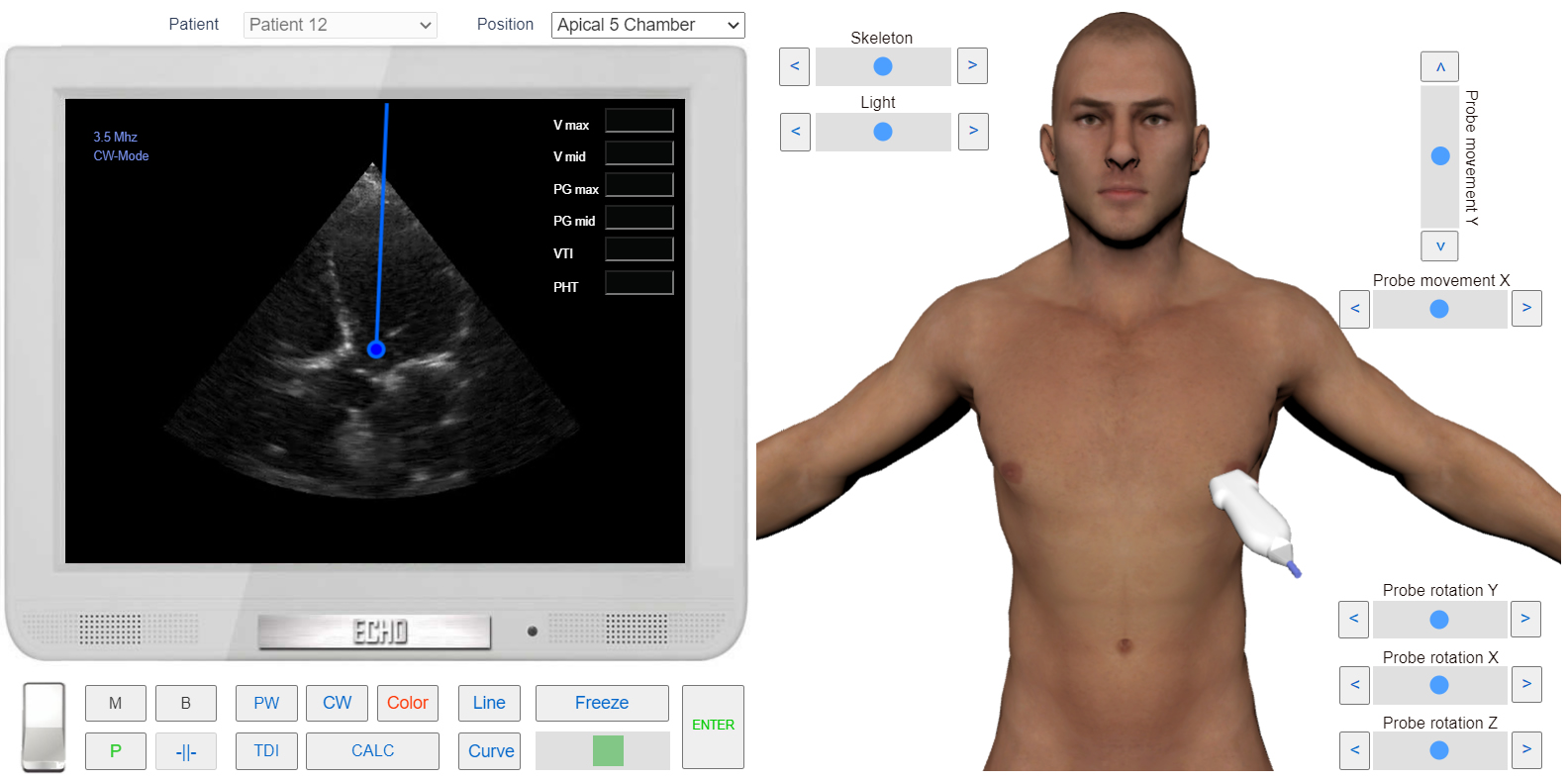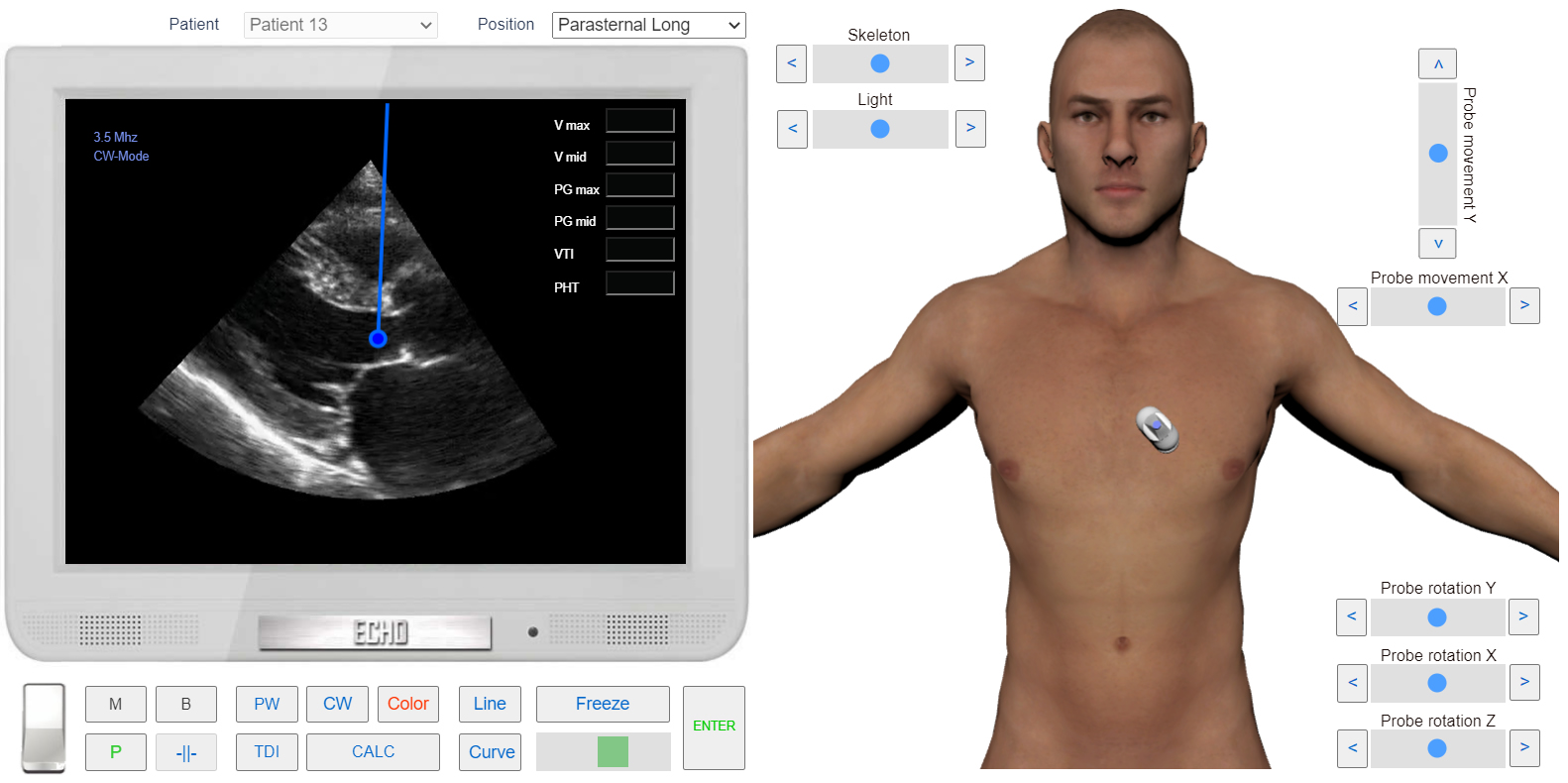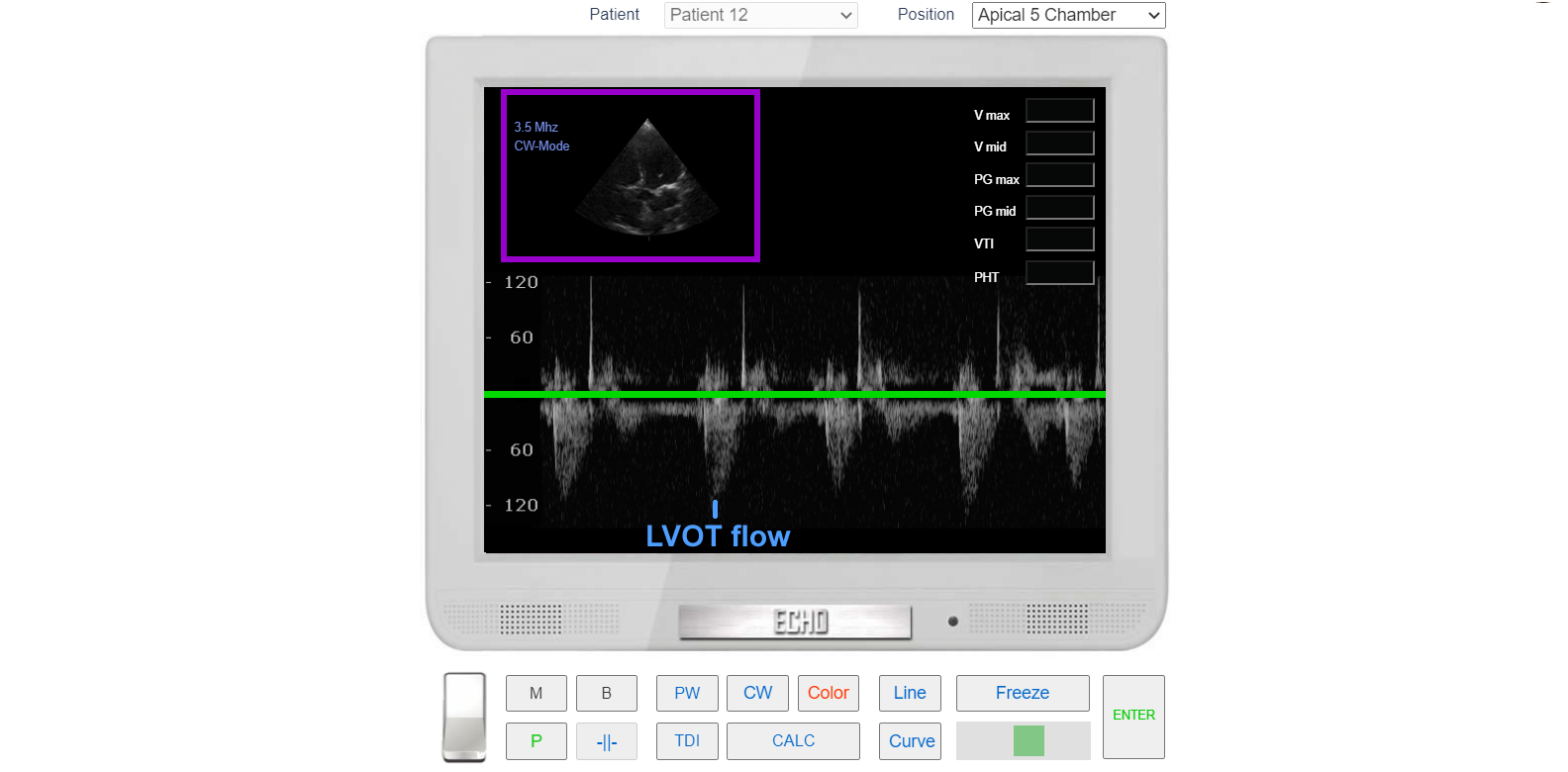Left ventricular outflow tract (LVOT) flow spectral doppler
Echocardiography Textbook
For studying left ventricular outflow tract flow, the apical five chamber position is the best choice. In this position, the flow is almost parallel to the ultrasonic beam. It is also possible to use the left parasternal approach, the long axis of the heart.
The Sample Volume is placed proximal to the aortic valve (at a distance of 5-10 mm from the valve, towards the left ventricle). The flow will almost always exceed the Nyquist limit, therefore a continuous wave Doppler is better to use for examination.

Sample Volume position. Apical 5 Chamber view

Sample Volume position. Parasternal view Long axis
Normally, the flow in the outflow tract of the left ventricle occurs in the systole phase and is directed towards the aorta. The flow is directed away from the transducer and located below the baseline.
In the aorta, the flow speed is slightly higher than in the outflow tract of the left ventricle. If there is no aortic stenosis, it is possible to limit ourselves only to study the outflow tract flow (In this case, the flow in the aorta is almost the same as in the LV outflow tract).

LVOT flow. CW Doppler
How to Simulate Left Ventricular Outflow Tract (LVOT) flow (PW and CW mode)?